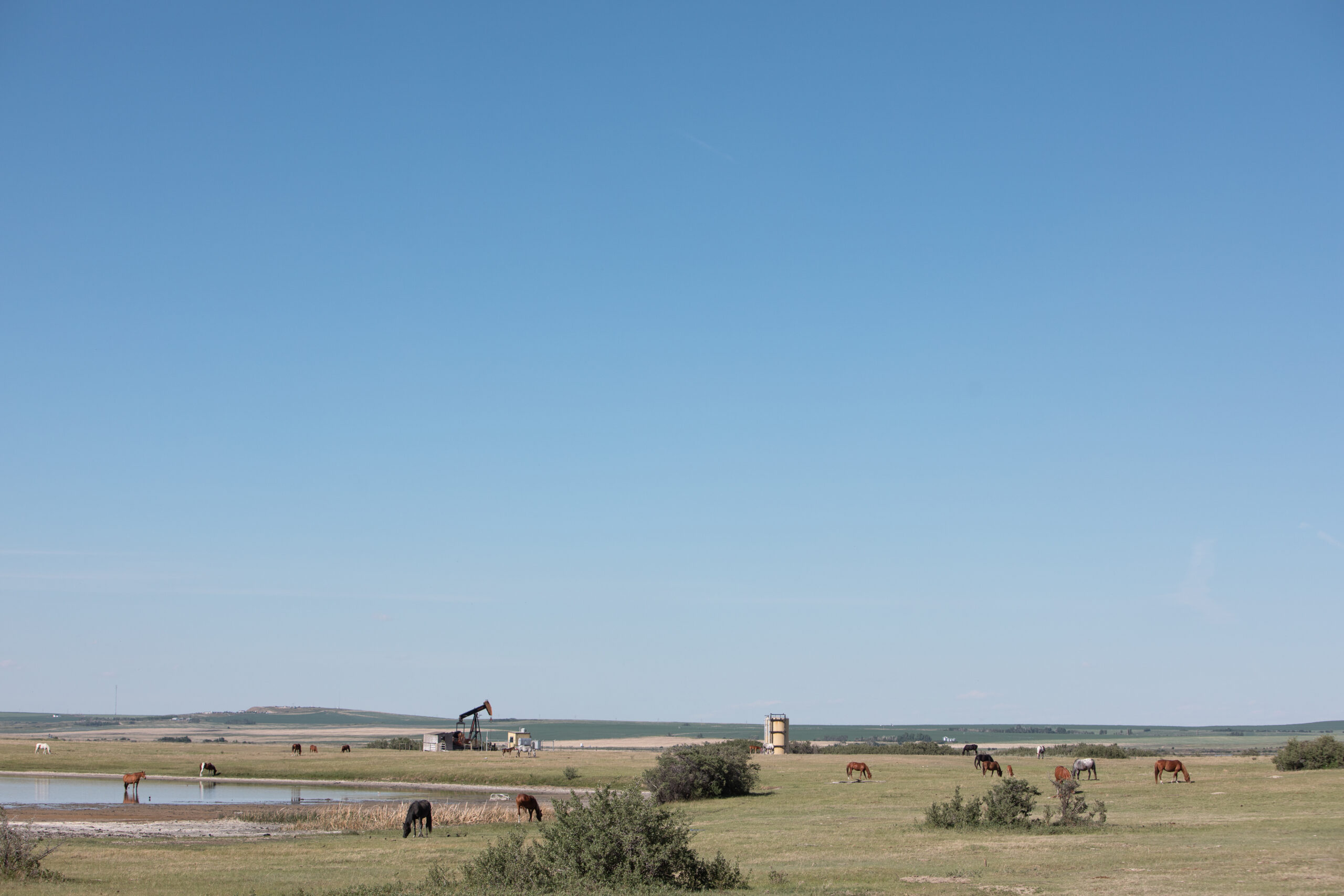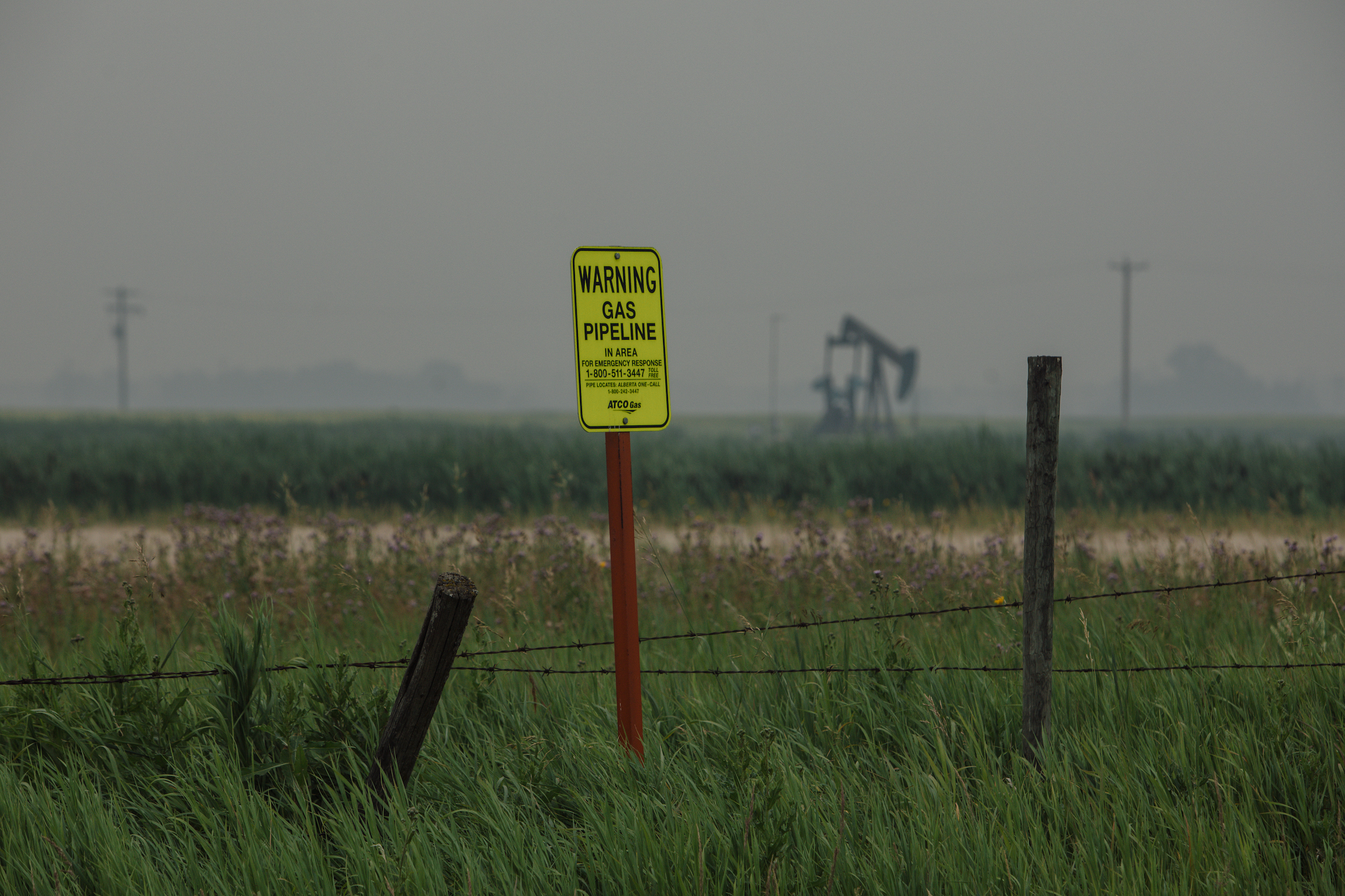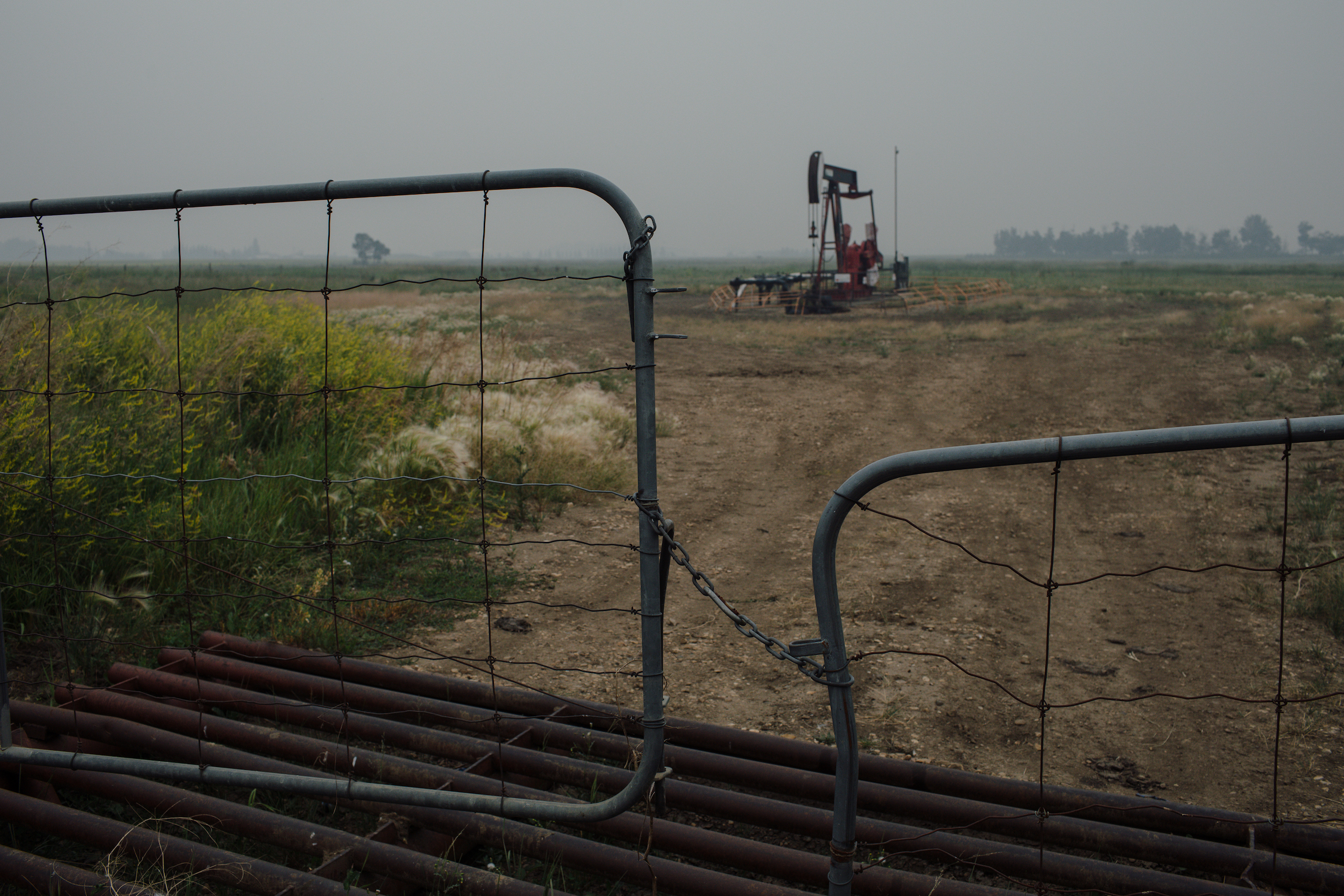
What’s scarier for Canadian communities — floods, or flood maps?
When maps showing areas most likely to flood are outdated, it puts people and property...
The regulator overseeing the energy industry in Alberta has kept the public in the dark for at least three years about a confidential list featuring hundreds of potentially dangerous sites contaminated by oil and gas development in the province, The Narwhal has learned.
Staff at the Alberta Energy Regulator flagged details about a 2019 version of the list in an internal briefing note prepared for a high-ranking official in the spring of 2020. They prepared the briefing document to highlight risks as the province and industry grappled with low oil prices and reduced demand in the early days of the global COVID-19 pandemic.
The Narwhal obtained a copy of the briefing document in response to a freedom of information request. The full details of the list have not been released.
“The [regulator] is tracking the status of several hundred contaminated sites,” the briefing note, prepared for Martin Foy, executive vice president of the regulator’s operations division, said. “Many of these sites pose some risk to public safety and/or the environment.”
The regulator was aware of at least 577 sites with known contamination of soil or groundwater in 2019 — before the pandemic started — and “as many of 400 of those were potentially high risk,” according to the April 30, 2020, briefing note.
At the time officials sent the document to Foy, the provincial government was also grappling with a review of rules meant to tackle the legacy of decades of oil and gas development in Alberta and ensure taxpayers are not left with a multibillion-dollar cleanup bill.
While some of the sites could have been contaminated due to a spill during active operations of an oil and gas well or other fossil fuel infrastructure such as a pipeline, staff at the regulator said other abandoned or inactive sites may also have been contaminated due to leaks or spills that were not initially discovered, according to other internal documents reviewed by The Narwhal.

A separate internal Alberta Energy Regulator draft analysis from September 2019 noted oil and gas companies have walked away from more than 600 wells with potential contamination that are within 10 kilometres of either Calgary, Edmonton or Red Deer. Prior to 2003, the government issued reclamation certificates in Alberta without requiring any assessment for contamination, the analysis said.
That analysis — sent to officials at different provincial government ministries and released through freedom of information legislation — noted the companies responsible for these 600 legacy sites are no longer active. Although an industry-funded association collects money from companies to cover the cleanup at sites left behind by firms that went bankrupt, there are at least seven sites with known contamination that are not covered by this arrangement.
This may leave taxpayers responsible for footing the bill on those seven sites — or on any other contaminated site that was certified as reclaimed before 2003.
According to the Alberta government, there are nearly half a million oil and gas wells across the province. Of those, the Alberta Energy Regulator — the industry-funded body in charge of regulating the province’s energy industry — reports more than 83,000 are inactive and more than 87,000 are abandoned.
Wells deemed “inactive” no longer produce oil or gas but may do so again in the future, while “abandonment” is the industry term for permanently sealing or plugging a well. An abandoned well can still pose risks to the public, and soil contamination may not be dealt with until later stages in the cleanup process, which can take years.
Contaminated sites may cause health issues, including cancer, particularly if hydrocarbons get into the water supply. All types of oil and gas sites can potentially cause contamination if they are not monitored properly and Alberta has developed rules companies must follow when they suspend operations.

By law, companies must notify anyone who may be “directly affected” by the release of anything that may cause an “adverse effect.”
Though the regulator and government track information on contamination on individual well sites, it’s not easy for the public to find or understand it: doing so would would mean searching through various pages on the regulator’s website or other provincial government pages to download files and creating a spreadsheets to verify the status of sites or their locations.
And though the regulator compiled an internal list of sites that may pose a risk to public safety, it hasn’t publicly released this list of “potentially high risk” sites.
Dwight Popowich owns land near Two Hills, Alta., with an old natural gas well that was orphaned in 2018 when its owner declared bankruptcy. He told The Narwhal in an interview he was not surprised to hear the regulator withheld its analysis of the extent of industrial contamination.
Popowich said he has been pressing the regulator for years to provide more support and information, but has found it hard to get any specifics.
He believes both provincial government and regulatory officials in Alberta want to hide details that give the oil and gas industry a bad name.
“They’ve always been quiet about this,” Popowich said in an interview after The Narwhal told him about the statistics revealed in the briefing note. “They don’t want that kind of information out there and having a bad name about how dangerous this stuff is.”
The regulator went to significant lengths to conceal key parts of its internal analysis and statistics, heavily redacting the documents in response to freedom of information requests submitted in 2020.
By law, public bodies in Alberta such as the regulator must release information upon request to anyone who pays a $25 fee, unless it has a valid reason to refuse.
But the regulator claimed its statistics and analysis were part of “confidential” advice needed to make decisions about the future of aging fossil fuel sites. It also argued releasing its statistics on the number of contaminated sites it was tracking would complicate its efforts to make decisions about the issue.
The Office of the Information and Privacy Commissioner — a provincial freedom of information watchdog — rejected those arguments after investigating the regulator’s attempts to censor the material. In a letter sent to The Narwhal, the information watchdog concluded the regulator’s arguments were lacking details explaining how the passages would reveal advice and that it “did not properly exercise its discretion to withhold all the information.”
In response to a list of detailed questions from The Narwhal, a spokesperson for the Alberta Energy Regulator said in an email the regulator is “active across the province” to ensure an oil and gas company “fixes the problem” if its sites are violating rules. The regulator also said it posts data and statistics about oil and gas wells on its website.
In response to a question about the potential for unknown contamination at old oil and gas sites that received reclamation certificates without being assessed for contamination, the spokesperson said the provincial auditor general has reviewed this issue and determined the Alberta Environment Ministry needs to develop clear guidance for the regulator on how to manage these sites and who should pay for the cleanup of old sites not otherwise looked after.

The spokesperson did not answer questions about the location of the 577 sites where the regulator knows there is contamination and whether they were located near homes or human activity. The regulator also did not respond to questions asking what it did to notify landowners or members of the public who may be directly or indirectly affected by contaminated sites on the list by publication time.
In response to a question about what would constitute “potentially high risk” sites, the regulator pointed to a document on its website about “contamination management,” which outlines how immediate action must be taken by a site operator if there is potential for “adverse effects” of contamination.
The offices of Minister of Environment and Protected Areas Sonya Savage and Minister of Energy Pete Guthrie did not respond to a list of questions sent by The Narwhal about the revelations in the newly released documents.
Enbridge Gas will face Waterloo Region in a hearing before the Ontario Energy Board to renew an agreement that would allow the company to continue...
Continue reading
When maps showing areas most likely to flood are outdated, it puts people and property...

We’re suing the RCMP for arresting a journalist on assignment for The Narwhal. It’s an...

As glaciers in Western Canada retreat at an alarming rate, guides on the frontlines are...